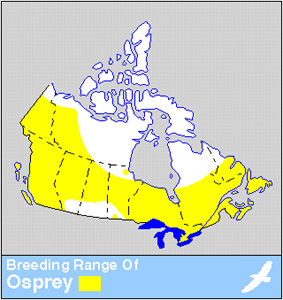Browse "Things"
-
Article
Ornithomimus
Ornithomimus (pronounced or-NEETH-oh-MY-mus) is a genus of medium-sized, plant-eating, theropod dinosaur that looked like an ostrich. Paleontologists recognize two species of Ornithomimus, one of which, Ornithomimus edmontonicus, lived in Canada. It existed between 72.6 to 69.6 million years ago in Alberta, although individuals that lived as far back as 76.5 million years ago have also been referred to as that species. Ornithomimus was covered with primitive, down-like feathers and sported wings that it used for courtship and display. Feathers were first discovered on Ornithomimus by François Therrien, a paleontologist at the Royal Tyrrell Museum of Palaeontology, in 2008 — the first time a feathered dinosaur had been discovered anywhere in the Western Hemisphere.
"https://d2ttikhf7xbzbs.cloudfront.net/media/new_article_images/Ornithomimus/KuetherOrnithomimus.jpg" // resources/views/front/categories/view.blade.php
https://d2ttikhf7xbzbs.cloudfront.net/media/new_article_images/Ornithomimus/KuetherOrnithomimus.jpg
-
Article
Orthodox Church
Orthodox Church, also commonly known as the Eastern, Greek or Byzantine Church, a family of Christian churches historically found in eastern Europe, the Near East, Africa and Asia (see CHRISTIANITY).
"https://development.thecanadianencyclopedia.ca/images/tce_placeholder.jpg?v=e9dca980c9bdb3aa11e832e7ea94f5d9" // resources/views/front/categories/view.blade.php
https://development.thecanadianencyclopedia.ca/images/tce_placeholder.jpg?v=e9dca980c9bdb3aa11e832e7ea94f5d9
-
Editorial
Canadian Soldiers and the Battle of Ortona
The following article is an editorial written by The Canadian Encyclopedia staff. Editorials are not usually updated.
"https://d2ttikhf7xbzbs.cloudfront.net/media/media/599599a1-a339-4bd7-84d5-6bf2c1238122.jpg" // resources/views/front/categories/view.blade.php
https://d2ttikhf7xbzbs.cloudfront.net/media/media/599599a1-a339-4bd7-84d5-6bf2c1238122.jpg
-
Article
Oshawa Strike
Two of Hepburn's Cabinet colleagues who opposed his actions, Minister of Labour David Croll and Attorney General Arthur Roebuck, were persuaded to resign.
"https://d2ttikhf7xbzbs.cloudfront.net/media/media/13cef129-bb89-4686-97b1-a512f5d675f1.jpg" // resources/views/front/categories/view.blade.php
https://d2ttikhf7xbzbs.cloudfront.net/media/media/13cef129-bb89-4686-97b1-a512f5d675f1.jpg
-
Article
Osprey
The osprey (Pandion haliaetus) is a large, cosmopolitan bird of prey characterized by a crested head and contrasting black, white and grey plumage.
"https://d2ttikhf7xbzbs.cloudfront.net/media/media/ed49234c-3f61-4bd7-b4de-05e4e5ddd200.jpg" // resources/views/front/categories/view.blade.php
https://d2ttikhf7xbzbs.cloudfront.net/media/media/ed49234c-3f61-4bd7-b4de-05e4e5ddd200.jpg
-
Macleans
Osteoporosis Breakthrough
In the spring of 1997, William Boyle, a microbiologist at Amgen Inc., a drug company based near Los Angeles, placed a telephone call to Dr. Josef Penninger, an immunologist at the firm's Toronto offshoot, the Amgen Research Institute.This article was originally published in Maclean's Magazine on February 8, 1999
"https://development.thecanadianencyclopedia.ca/images/tce_placeholder.jpg?v=e9dca980c9bdb3aa11e832e7ea94f5d9" // resources/views/front/categories/view.blade.php
https://development.thecanadianencyclopedia.ca/images/tce_placeholder.jpg?v=e9dca980c9bdb3aa11e832e7ea94f5d9
-
Article
Ottawa Agreements
The Ottawa Agreements were 12 bilateral trade agreements providing for mutual tariff concessions and certain other commitments, negotiated 20 July-20 August 1932 at Ottawa by Britain, Canada and other COMMONWEALTH Dominions and territories.
"https://development.thecanadianencyclopedia.ca/images/tce_placeholder.jpg?v=e9dca980c9bdb3aa11e832e7ea94f5d9" // resources/views/front/categories/view.blade.php
https://development.thecanadianencyclopedia.ca/images/tce_placeholder.jpg?v=e9dca980c9bdb3aa11e832e7ea94f5d9
-
Macleans
Ottawa Appeals Pay Equity Ruling
Carol-Anne Grenier reckons the government owes her $20,000, and she is seething with anger at Prime Minister Jean Chrétiens refusal to pay up.This article was originally published in Maclean's Magazine on September 7, 1998
"https://development.thecanadianencyclopedia.ca/images/tce_placeholder.jpg?v=e9dca980c9bdb3aa11e832e7ea94f5d9" // resources/views/front/categories/view.blade.php
https://development.thecanadianencyclopedia.ca/images/tce_placeholder.jpg?v=e9dca980c9bdb3aa11e832e7ea94f5d9
-
Macleans
Ottawa Endorses Québec Partition
Gary Shapiro describes the idea as a "poison pill," a kind of desperate last resort to avert a looming national tragedy. Anthony Housefather considers it a "safety blanket to guarantee that we are all going to remain Canadian.This article was originally published in Maclean's Magazine on February 12, 1996
"https://development.thecanadianencyclopedia.ca/images/tce_placeholder.jpg?v=e9dca980c9bdb3aa11e832e7ea94f5d9" // resources/views/front/categories/view.blade.php
https://development.thecanadianencyclopedia.ca/images/tce_placeholder.jpg?v=e9dca980c9bdb3aa11e832e7ea94f5d9
-
Macleans
Ottawa Massacre
This article was originally published in Maclean’s magazine on April 19, 1999. Partner content is not updated. Like many of his colleagues at Ottawa-Carleton's public transit company, Grant Harrison wore his grief openly.
"https://development.thecanadianencyclopedia.ca/images/tce_placeholder.jpg?v=e9dca980c9bdb3aa11e832e7ea94f5d9" // resources/views/front/categories/view.blade.php
https://development.thecanadianencyclopedia.ca/images/tce_placeholder.jpg?v=e9dca980c9bdb3aa11e832e7ea94f5d9
-
Macleans
Ottawa Purchases New Helicopters
Cpl. Mark Gibeault missed the big news conference. Many of his colleagues gathered around TVs last week at the Comox, B.C., armed forces base to applaud Defence Minister Arthur Eggleton's long-awaited announcement that Canada would buy 15 new search-and-rescue helicopters.This article was originally published in Maclean's Magazine on January 19, 1998
"https://development.thecanadianencyclopedia.ca/images/tce_placeholder.jpg?v=e9dca980c9bdb3aa11e832e7ea94f5d9" // resources/views/front/categories/view.blade.php
https://development.thecanadianencyclopedia.ca/images/tce_placeholder.jpg?v=e9dca980c9bdb3aa11e832e7ea94f5d9
-
Macleans
Ottawa Rethinking Foreign Aid
By her own admission, Susan Whelan was not the logical choice to be Canada's top social worker to the world. A small-business lawyer and daughter of former agriculture minister Eugene Whelan, the MP for Essex, near Windsor, Ont.This article was originally published in Maclean's Magazine on October 28, 2002
"https://development.thecanadianencyclopedia.ca/images/tce_placeholder.jpg?v=e9dca980c9bdb3aa11e832e7ea94f5d9" // resources/views/front/categories/view.blade.php
https://development.thecanadianencyclopedia.ca/images/tce_placeholder.jpg?v=e9dca980c9bdb3aa11e832e7ea94f5d9
-
Article
Ottawa Senators
The Ottawa Senators are a professional hockey team in the National Hockey League. Based in Ottawa, Ontario, they play at the Canadian Tire Centre, an 18,500-seat arena that first opened in 1996. The modern Senators began playing in the NHL in 1992; they are the second team to play under the name. The original team (officially the Ottawa Hockey Club, but known as the Senators from around 1908) dominated Canadian hockey in the early 20th century, winning the Stanley Cup 11 times.
"https://d2ttikhf7xbzbs.cloudfront.net/media/new_article_images/Ottawa-Senators/Ottawa_Senators.jpg" // resources/views/front/categories/view.blade.php
https://d2ttikhf7xbzbs.cloudfront.net/media/new_article_images/Ottawa-Senators/Ottawa_Senators.jpg
-
Macleans
Ottawa Slow to Take Steps to Control BSE
RECENT DISCLOSURES OF MORE mad cows in our midst raise the nagging question of why Canada is not doing far more to screen the nation's cattle herds for the dreaded bovine spongiform encephalopathy, better known as mad cow disease.This article was originally published in Maclean's Magazine on February 14, 2005
"https://development.thecanadianencyclopedia.ca/images/tce_placeholder.jpg?v=e9dca980c9bdb3aa11e832e7ea94f5d9" // resources/views/front/categories/view.blade.php
https://development.thecanadianencyclopedia.ca/images/tce_placeholder.jpg?v=e9dca980c9bdb3aa11e832e7ea94f5d9
-
Macleans
Ottawa takes on reproductive technology
The new federal law on reproductive technology tabled last week was a long time coming. A royal commission studied the subject exhaustively from 1989 to 1993.This article was originally published in Maclean's Magazine on May 20, 2002
"https://development.thecanadianencyclopedia.ca/images/tce_placeholder.jpg?v=e9dca980c9bdb3aa11e832e7ea94f5d9" // resources/views/front/categories/view.blade.php
https://development.thecanadianencyclopedia.ca/images/tce_placeholder.jpg?v=e9dca980c9bdb3aa11e832e7ea94f5d9
